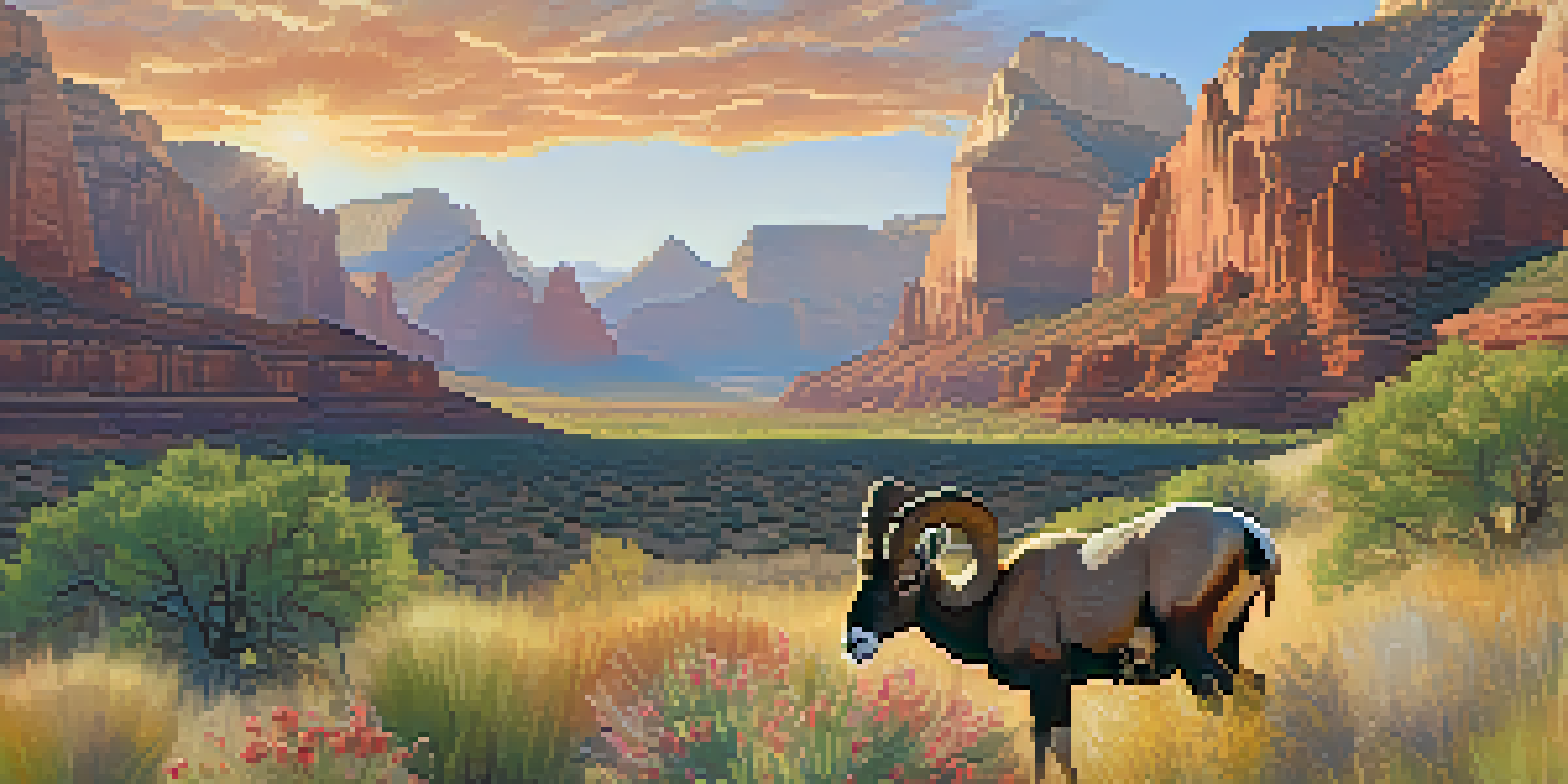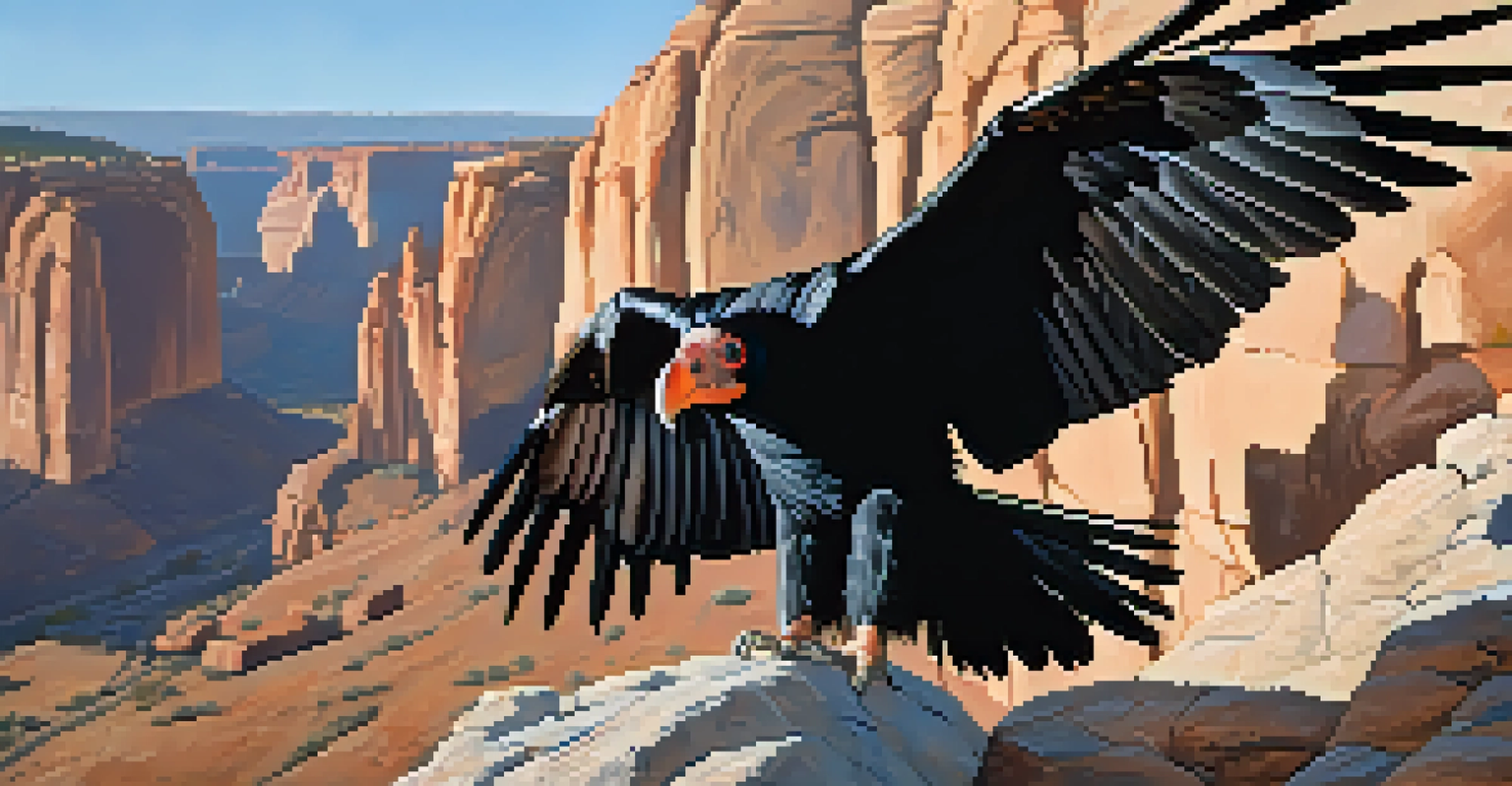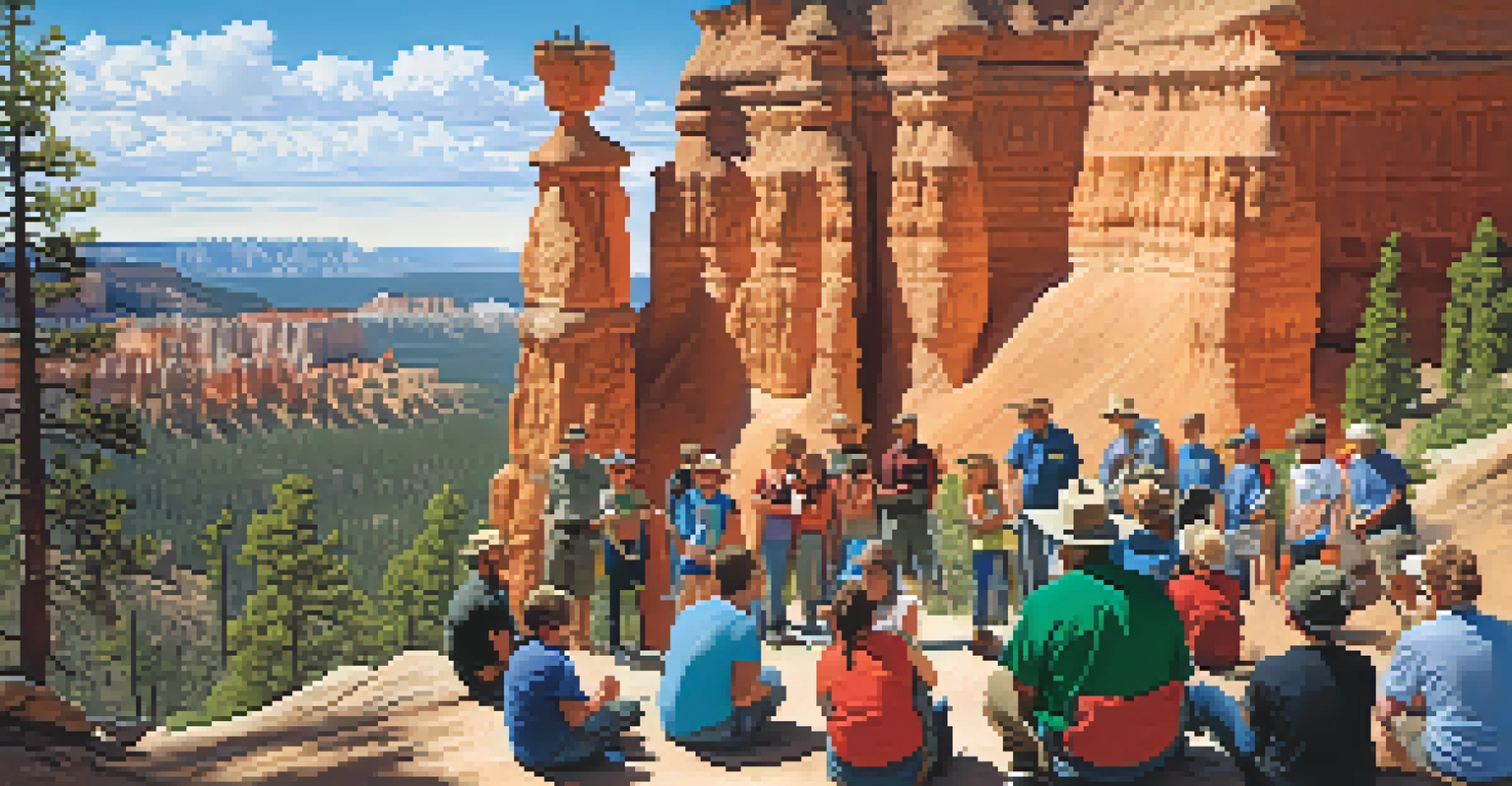The Role of National Parks in Utah's Wildlife Conservation

Introduction to Utah's Unique Wildlife and National Parks
Utah is home to a diverse array of wildlife, including species like the desert bighorn sheep and the endangered California condor. These animals thrive in the varied ecosystems found across the state, from deserts to mountains. National parks play a pivotal role in safeguarding these unique habitats, ensuring that wildlife can flourish without the pressures of urban development and industrial activity.
In every walk with nature one receives far more than he seeks.
The national parks in Utah, such as Zion, Bryce Canyon, and Arches, serve as sanctuaries for these species. By providing protected areas, they create a safe haven where flora and fauna can thrive. This is crucial not only for the animals themselves but also for maintaining biodiversity, which is essential for ecosystem health.
Moreover, these parks attract visitors who come to appreciate the natural beauty and learn about conservation efforts. This awareness fosters a connection between people and wildlife, highlighting the importance of protecting these environments for future generations.
Habitat Protection: A Key Role of National Parks
One of the primary functions of national parks is to protect natural habitats. In Utah, these parks preserve critical ecosystems that serve as homes for many species. For instance, the canyons and cliffs of Zion National Park provide nesting sites for peregrine falcons, while the unique rock formations in Arches support various plant species that are vital for the local fauna.

By restricting human activities such as logging, mining, and development, national parks help maintain the integrity of these habitats. This protection allows wildlife populations to stabilize and grow, which is vital in the face of climate change and other environmental pressures. The parks act as a buffer, reducing the impact of human encroachment.
National Parks Protect Wildlife Habitats
Utah's national parks serve as vital sanctuaries, preserving critical ecosystems that support diverse wildlife species.
Additionally, these protected areas facilitate essential ecological processes, such as migration and breeding. For many species, the ability to move freely between habitats is crucial for their survival, particularly as they adapt to changing environmental conditions.
Research and Monitoring: Understanding Wildlife Needs
National parks in Utah play a significant role in wildlife research and monitoring. Scientists and conservationists utilize these protected areas to study animal behavior, population dynamics, and habitat usage. For example, the ongoing research on mule deer in Zion National Park helps identify the best strategies for managing their populations and ensuring their health.
The earth does not belong to us: we belong to the earth.
Monitoring programs within the parks also track the health of various species and their habitats. This data is crucial for assessing the effectiveness of conservation efforts and making informed decisions about wildlife management. Through these initiatives, national parks contribute valuable knowledge that benefits not just Utah, but conservation efforts nationwide.
Furthermore, the parks often collaborate with universities and research organizations, creating a strong network of expertise. This collaboration fosters innovative strategies for wildlife conservation, adapting to new challenges and ensuring sustainable practices.
Public Education and Awareness in Conservation Efforts
Education is a vital component of wildlife conservation, and national parks excel in this area. Through visitor centers, ranger-led programs, and interpretive signage, these parks educate the public about the importance of protecting wildlife and their habitats. This knowledge empowers visitors to become advocates for conservation.
Many parks offer volunteer programs that allow visitors to engage directly in conservation efforts. Whether it’s participating in clean-up activities or assisting with wildlife monitoring, these hands-on experiences deepen the connection between people and nature. They also help foster a sense of responsibility towards the environment.
Education Fuels Conservation Efforts
Through educational programs and volunteer opportunities, national parks empower visitors to advocate for wildlife protection.
By promoting awareness and understanding, national parks inspire future generations to appreciate and protect wildlife. This ripple effect can lead to increased support for conservation initiatives, both locally and globally, ensuring that these efforts continue for years to come.
Challenges Facing Wildlife in Utah's National Parks
Despite their protective nature, national parks in Utah face numerous challenges in wildlife conservation. Climate change, invasive species, and human activity can threaten the delicate balance of these ecosystems. For example, rising temperatures impact the migration patterns of several species, while invasive plants can outcompete native flora.
Additionally, increased visitation to these parks can lead to habitat degradation if not managed properly. While tourism is vital for local economies, it is essential to find a balance that protects wildlife. Parks must implement sustainable practices, such as limiting visitor access to sensitive areas, to mitigate these impacts.
Addressing these challenges requires ongoing research, adaptive management strategies, and collaboration between park officials, scientists, and the public. Together, they can develop solutions that prioritize wildlife conservation while still allowing people to enjoy the natural beauty of Utah’s national parks.
Success Stories: Wildlife Recovery in National Parks
Utah's national parks have seen remarkable success stories in wildlife recovery due to dedicated conservation efforts. One notable example is the recovery of the California condor population, which was on the brink of extinction. Through intensive monitoring, habitat protection, and breeding programs, these majestic birds are now making a comeback in their natural habitat.
Another success story involves the reintroduction of the gray wolf in some areas of Utah. This keystone species plays a crucial role in maintaining the health of the ecosystem by controlling deer populations, which in turn supports the growth of vegetation. The presence of wolves has had a positive cascading effect on the entire ecosystem.
Addressing Conservation Challenges
Despite their protective nature, Utah's national parks face challenges like climate change and invasive species that threaten wildlife.
These success stories highlight the importance of national parks as refuges for wildlife. By providing a safe environment for species to thrive, these parks not only help restore populations but also contribute to the overall health of Utah’s ecosystems.
The Future of Wildlife Conservation in Utah's National Parks
Looking ahead, the future of wildlife conservation in Utah’s national parks will depend on continued commitment and innovation. As challenges such as climate change and habitat loss persist, adaptive management strategies will be essential. This includes embracing new technologies for monitoring wildlife and enhancing habitat restoration efforts.
Collaboration will also play a crucial role in shaping the future of conservation. Partnerships between government agencies, non-profits, and local communities can enhance conservation efforts, pooling resources and expertise to tackle complex challenges. Engaging the public in these efforts will also be vital, as community involvement fosters a sense of stewardship.

Ultimately, the future of wildlife in Utah's national parks hinges on a shared vision of conservation. By prioritizing the protection of these unique landscapes and their inhabitants, we can ensure that generations to come will enjoy the richness of Utah's natural heritage.